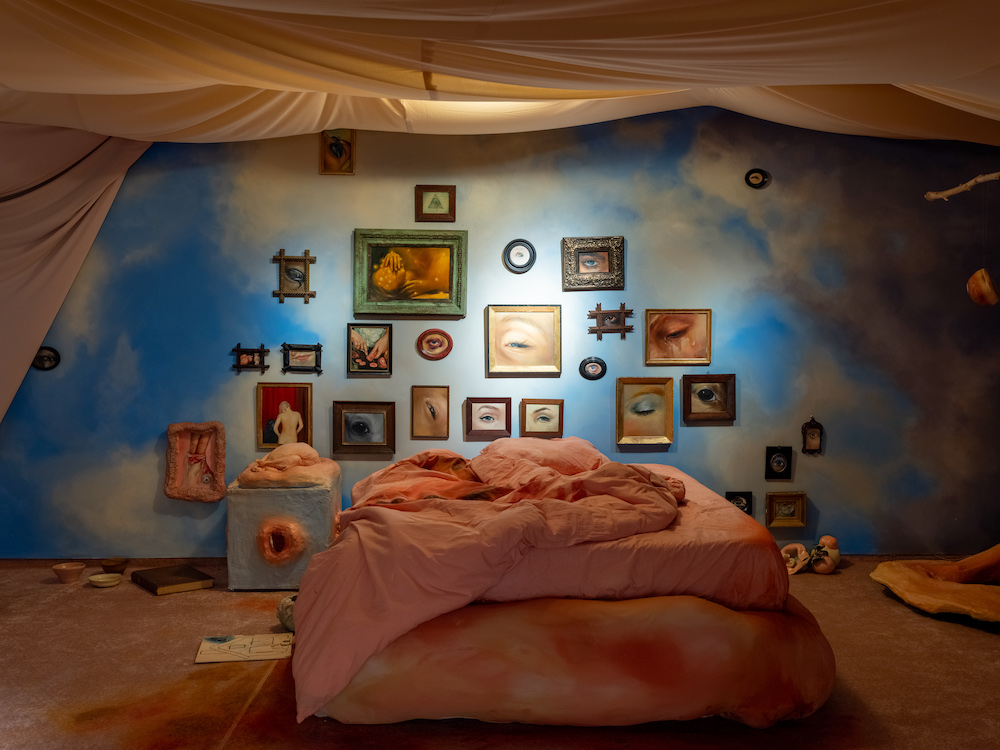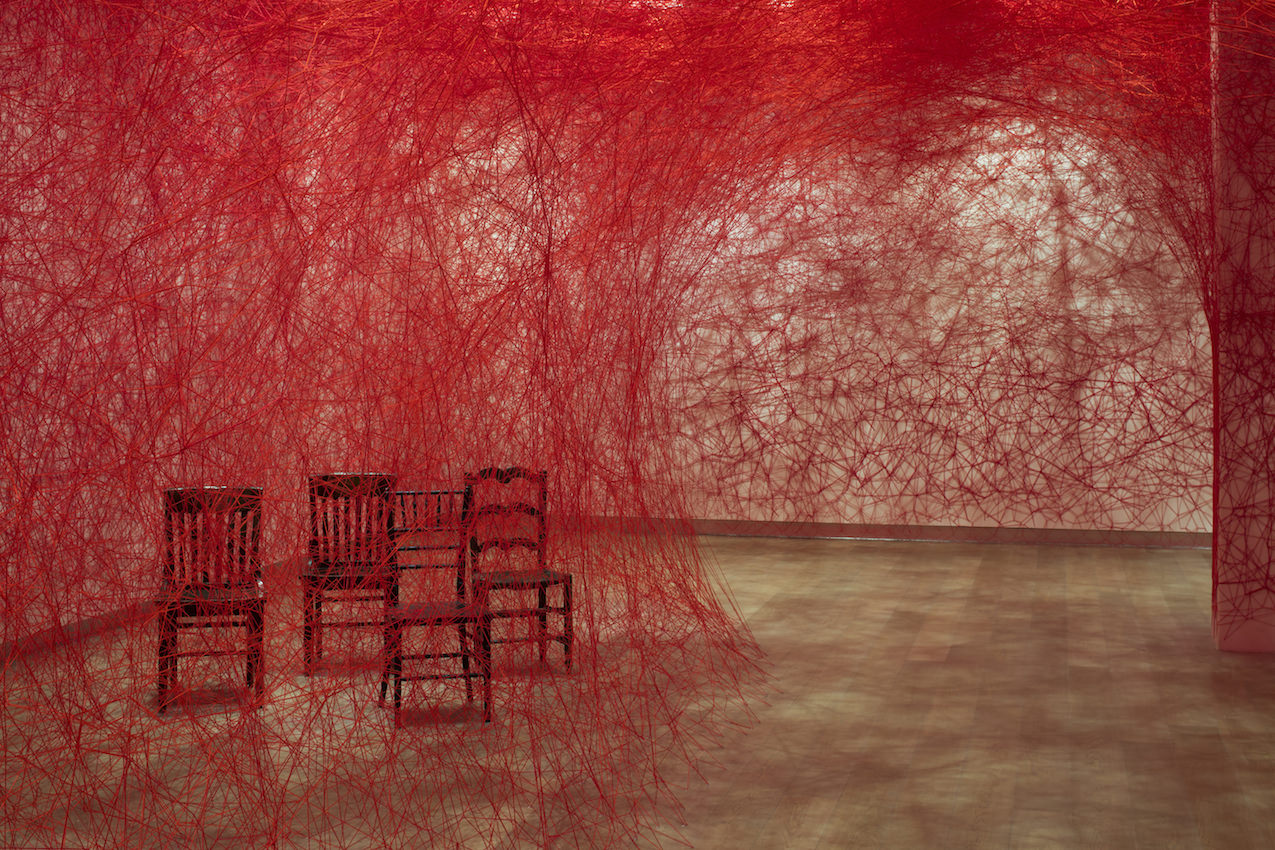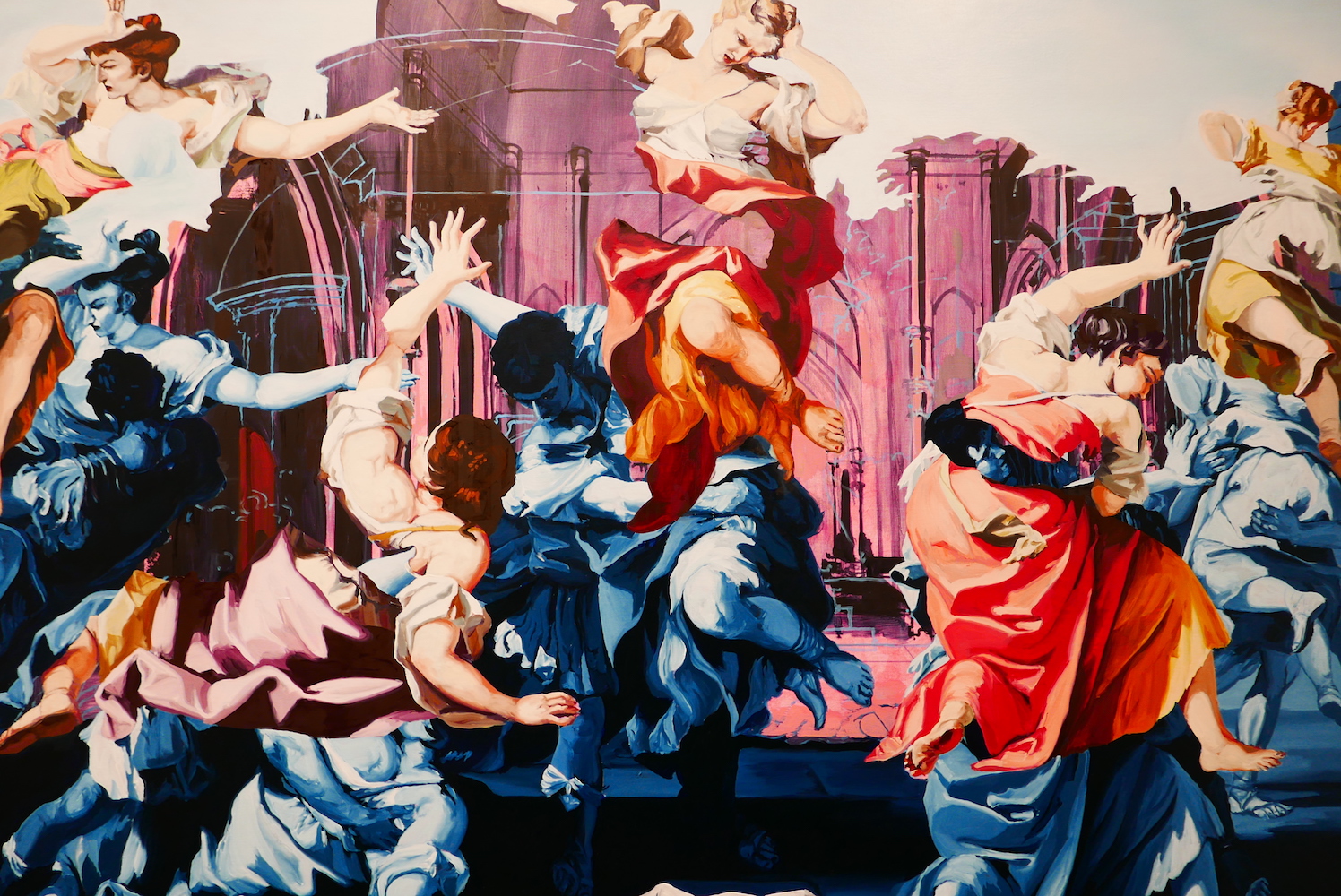The artist Oda Jaune is investigating her surroundings. Not only the bodily forms that she encounters but the conceptual and societal ideologies that can sometimes influence our thoughts and bodies. Born in Bulgaria, Jaune studied and trained as an artist in Germany and now works between Paris, London, and Bulgaria. With a practice that includes painting and installation, her approach to the various mediums she employs is entirely singular but always instigates intense intrigue from her viewer. Through her remarkably soft touch, Jaune is able to highlight the complexities inherent to the world through an exacting and carefully considered visual vocabulary, distilling and juxtaposing the humorous, touching, terrifying, and erotic parts of everyday life and the mystical realm.
“Miss Understand” is Oda Jaune’s first U.S. Solo Exhibition
In her first-ever solo exhibition in the United States, “Miss Understand,” at Templon in New York, Jaune is presenting an astonishing mix of new works: paintings on canvas, watercolors on paper, site-specific wall paintings, and her first large-scale immersive installation. Varying in size and scale, Jaune provides a variety of ways to connect with her work, opening up opportunities for various readings and points of connection.
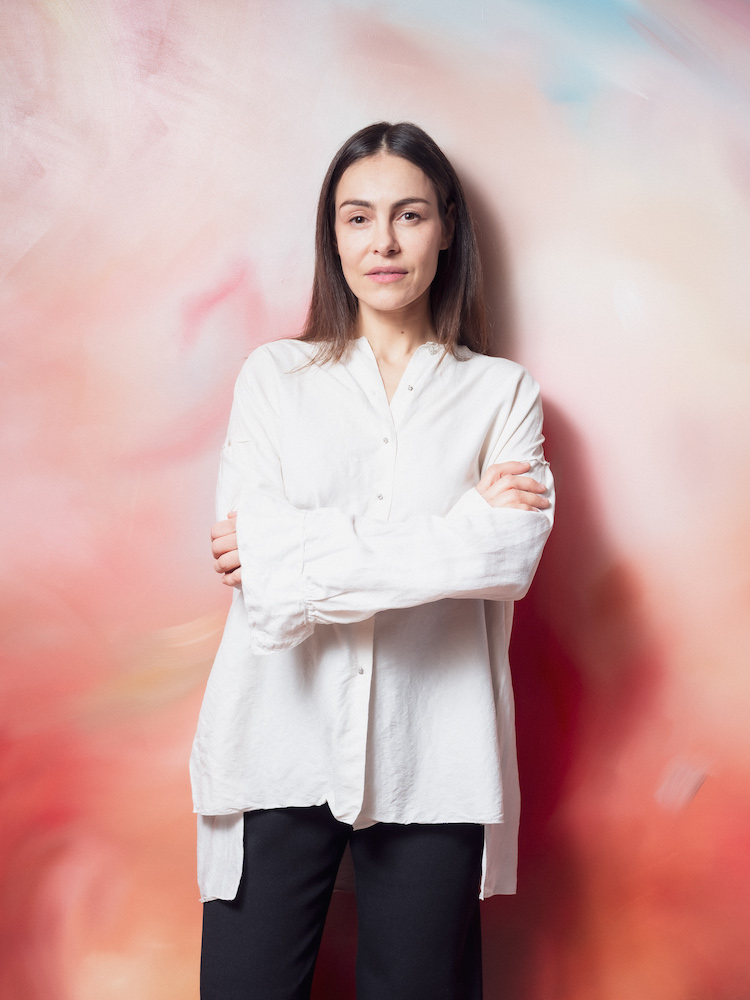
Oda Jaune, photo by © Charles Roussel.
And while much could be written about each work and the show altogether, Jaune herself noted, “I was always moved by all that cannot be told by words, for me when words end painting begins…art goes further. We don’t need to understand everything, but we shouldn’t stop feeling, as it’s a way of deepening our understanding.” It’s a body of work that really requires an in-person exploration, which makes it a must-see show.
Whitewall sat down with the artist to discuss the exhibition, on view now through March 9, and what she hopes her viewers might come away with after visiting.
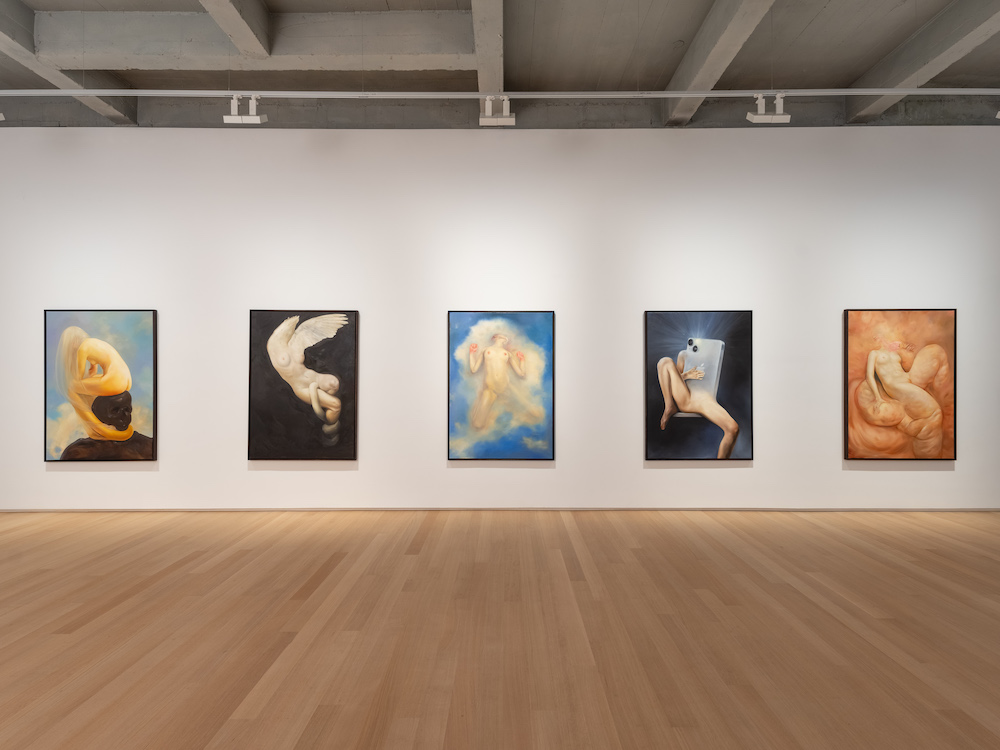
Installation view of Oda Jaune’s “Miss Understand” at Templon, New York, photo by © Charles Roussel, courtesy the artist and TEMPLON, Paris —Brussels — New York.
WHITEWALL: Congratulations on your first US solo show. How does it feel to present this new body of work in New York?
ODA JAUNE: Thank you. The experience has been very special for me. Imagining this show has been a year-long process. “Miss Understand” is such an expansive theme for me and an inspiration where there are discoveries and depths that I could explore endlessly in a body of work. Having and installing the show in New York, a city I have loved since my childhood, has been an incredible journey.
WW: Given the complexity of the exhibition, which comprises paintings, watercolors, and an installation, it must have required a great deal of planning to get ready for the opening. How was the process of hanging and installing the show?
OJ: The exhibition all began with the paintings that took a year to develop. Then I had the opportunity to be in the gallery by myself during December, organically developing the installation by escaping into the quiet of the space, creating a new reality with all of these new materials.
There is a lot of freedom and it is like a dream to see the exhibition finally come together in its materiality and earthiness. This freedom allowed the original idea to transform itself. For example, I was able to incorporate wall paintings in the installation that I did not plan until a month ago.
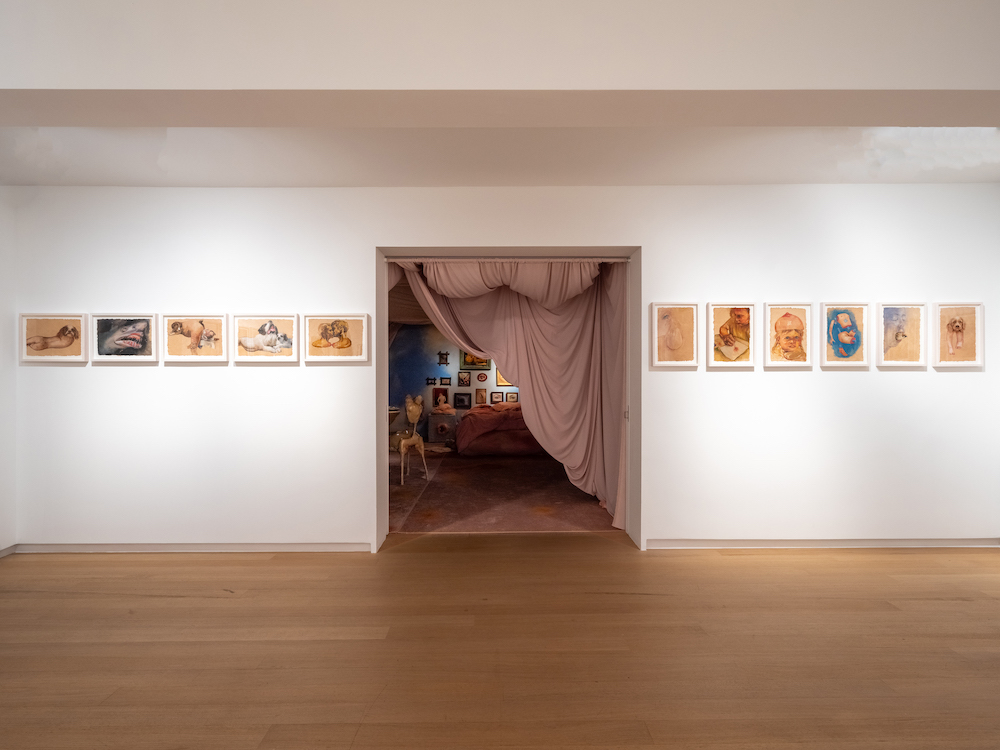
Installation view of Oda Jaune’s “Miss Understand” at Templon, New York, photo by © Charles Roussel, courtesy the artist and TEMPLON, Paris —Brussels — New York.
Oda Jaune’s Immersive Installation on the Gallery’s Lower Floor is a Living Space
I had the great opportunity over the weeks to create the installation on the lower floor—a living space for an imaginary woman who isn’t any of us, and is, in a way, each one of us.
There was a contrast between the noisy excitement above on the streets of New York and the complete silence in the gallery space, where I went early every morning when it was dark and left in the evening when it was dark again. I will never forget this very special feeling as if nothing else mattered while I was down there—a complete calm, as if the time stopped and opened space for new horizons. I loved being there and working on my show. It was the final phase after 12 months of painting in my studio. It all began with a simple idea that grew deeper and led me to an unknown land to create a new reality.
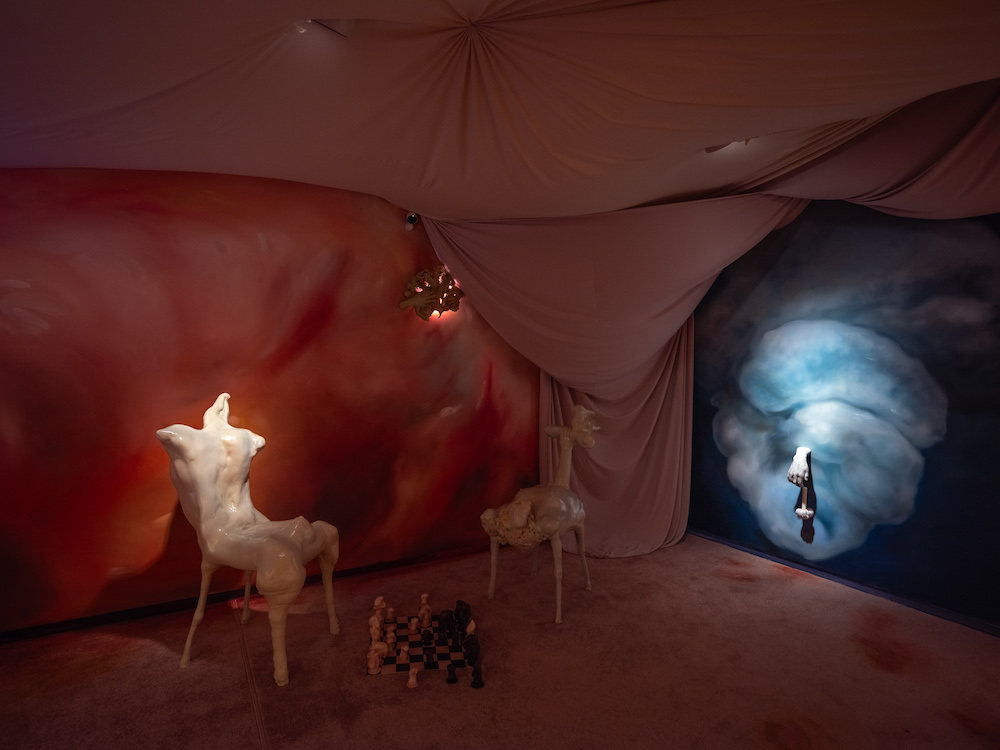
Installation view of Oda Jaune’s “Miss Understand” at Templon, New York, photo by © Charles Roussel, courtesy the artist and TEMPLON, Paris —Brussels — New York.
WW: Your work often references events, cultural icons, and feminist art collectives that center around how women are perceived now and throughout history. How do some of these references demonstrate themselves through the works on view?
OJ: “Miss Understand” opens a dialogue around the polarities that divide society today, such as good and evil, young and old, authentic and fake, innocent and guilty, light and shadow, tame and “Man Eater.”
The titles of each painting are names given to women—not ones that I agree with, but they act as queues. For example: “a” for angel, “m” for mother, “b” for bitch. There is energy in the image but not in these words. There is no right answer for the painting’s meaning. I am very happy to give viewers the freedom and all the choice—to expand the limit of what can be said and felt with words and focus on images, symbols, nuances, forms, light, sound, and space. Nothing is forbidden. Nothing is censored.
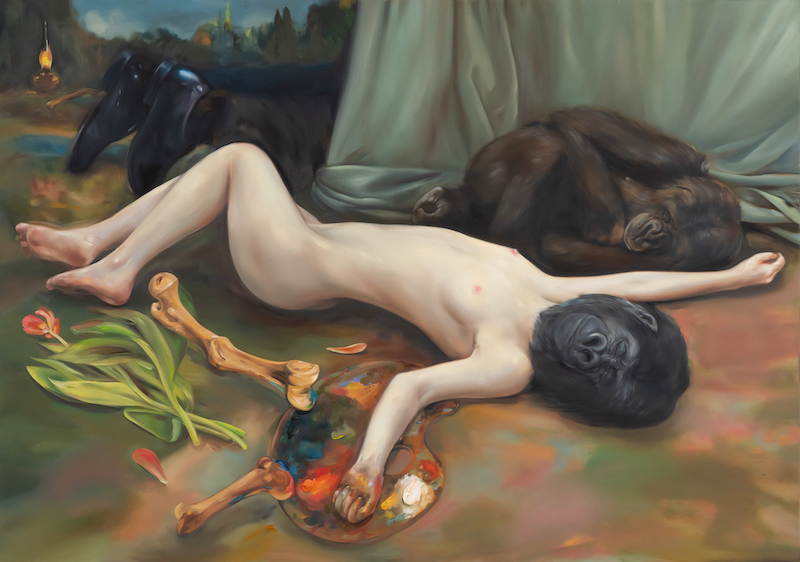
Oda Jaune, “G like Guerrilla Girl,” 2023, oil on canvas, 47 1/4 × 67 inches, photo by Laurent Edeline, courtesy the artist and TEMPLON, Paris —Brussels — New York.
WW: The allegorical nature of your paintings and watercolors compels the viewer to want to understand the narrative or conceptual framework of what is being depicted. Are you more interested in the viewer giving their own interpretations of your work, or do you enjoy telling the story of how a composition came to be?
OJ: My hope is that there is a sparkle in that particular space—something inside of the viewer is touched, and opens a door, opens a window, a new view, a horizon. For me what happens between a painting and a viewer is a very personal thing. I would always avoid interfering, there shouldn’t be any influence outside of the canvas. It’s an intimate space between the artwork and the person that is looking at it. It lasts just a few seconds.
For me it is crucial that the only thing that matters is the perception of each viewer and what the work means to them. I am often astonished and very touched when a viewer tells me the feeling that an image of mine evokes in them and that’s the best thing that can happen.
“When I paint, the paintings are created with love and the surfaces are soft. Love is about softness.” — Oda Jaune
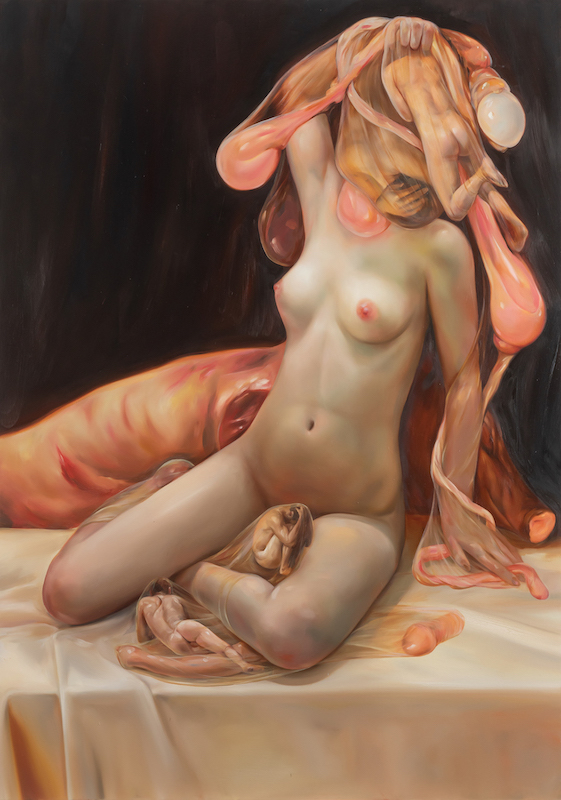
Oda Jaune, “M like Maneater,” 2023, oil on canvas, 67 × 47 1/4 inches, photo by Laurent Edeline, courtesy the artist and TEMPLON, Paris —Brussels — New York.
WW: There is such a softness and smoothness in how you approach the materials you use to paint. Do you feel as though this is an important component of reading your works?
OJ: Humans are made of a very soft material. We are surrounded by softness in our mother’s tummy and come to earth tender and soft. Our nature is soft, the tenderness of the flesh, skin, heart, and eyes are very soft. Nothing is sharp. There are no edges, no corners, no straight lines in our anatomy. It is strange how much humans have created geometrical, straight, 90-degree forms and hard surfaces in our everyday objects in the space we inhabit like furniture. It’s contrary to our nature. When I paint, the paintings are created with love and the surfaces are soft. Love is about softness.
WW: How do you feel when your works leave the studio?
OJ: When the paintings are finished, they leave me. That’s the moment of true separation. I don’t feel much of a separation when they physically leave my studio. I am rather happy because they will be seen and have their own life and journey. Also, it makes space for new paintings to be born.
WW: What is your hope that the viewer will come away with after seeing this exhibition?
OJ: I hope it will leave them feeling a bit more.
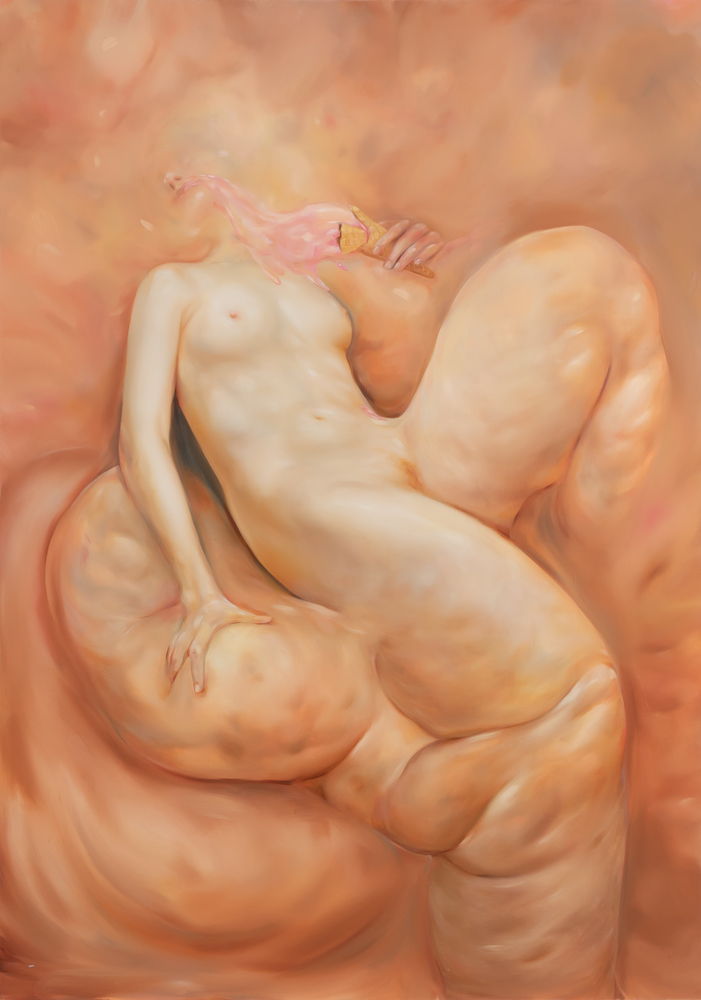
Oda Jaune, “F like Fa-y,” 2023, oil on canvas, 67 × 47 1/4 inches, photo by Laurent Edeline, courtesy the artist and TEMPLON, Paris —Brussels — New York.



